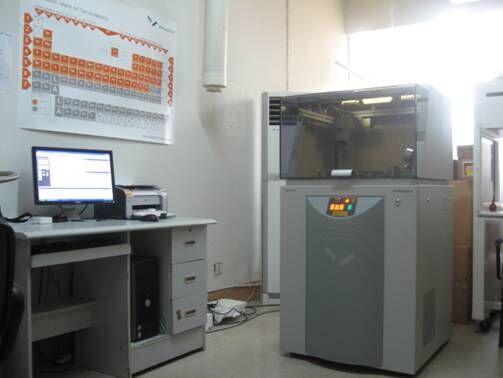Manufacturer: PANalytical, the Netherlands
Instrument performance: Cabinet temperature about 35 ℃, water temperature < 40℃, water flow in the range of 1-2 L/min, liquid nitrogen could not be lower than the standards. The working curves were established by filter paper for MicroMatter and corrected by NIST 2783. Analyze one sample need half an hour. To ensure the stability and reproducibility of the instrument, each of the 8 samples to do a review.
Work principle: The Epsilon 5 is equipped with a Gd anode X-ray tube, a PAN-32 Ge X-ray detector and high tension generator (at voltage 100kV, power 600W). Epsilon 5 using 3D optics, the X-ray path is not in one plane but two perpendicular planes. The detector is in the X-ray polarization plane and perpendicular to the incident direction of X-ray, it can be greatly reducing the scattering background generated by X-ray to ensure the implementation of highly polarized. The instrument has 12 secondary targets, a secondary target emits its characteristic radiation of elements, improve the signal-to-noise ratio, greatly reducing the detection limit of the instrument. The instrument is quantitatively quantified by the peak area of the energy peak in the energy spectrum obtained by the excitation sample and calculated the concentration of each element in the sample.
Test the elements in filter sample:
Quartz sample: S, Cl, K, Ca, Ti, Cr, Mn, Fe, Zn, As, Br and Pb;
Teflon sample: Na, Mg, Al, Si, S, Cl, K, Ca, Sc, Ti, V, Cr, Mn, Fe, Co, Ni, Zn, As, Br,Rb, Sr,Mo, Cd, Sn, Sb, Ba, Cu and Pb.
Sample preparation: The sample did not need pretreatment by Epsilon 5 EDXRF:
|

XRF |
|